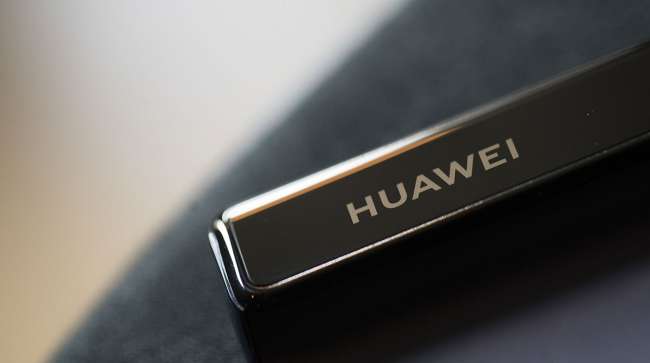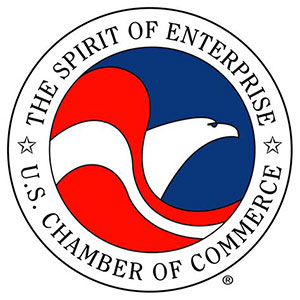Senior Reporter
Carriers Face August Deadline to Identify Specific Chinese Tech

[Stay on top of transportation news: Get TTNews in your inbox.]
American Trucking Associations and a U.S. Chamber of Commerce-led coalition are sounding the alarm over a provision tucked into the more than 700-page 2019 Defense Authorization Act that requires federal government contractors to by mid-August rid their companies of prohibited components manufactured by five Chinese companies.
The Chinese companies, believed to be potential hackers into U.S. intelligence and defense agencies’ information systems, include Huawei, ZTE Corp., Hytera, Hikvision and Dahua Technology. The provision also covers any subsidiary or affiliate of the entities, but experts warn that the technologies targeted could be very difficult to locate in complex modern corporate systems.
“Section 889 [of the law] seeks to prevent certain Chinese technology companies from accessing sensitive and classified information by tapping into devices they designed,” said Bill Wanamaker, executive director of ATA’s Government Freight Conference. “All federal contractors, including all modes of freight carriers, have electronic systems that facilitate business processes and operate their equipment.”

Wanamaker
The Chamber and ATA have for several months been on a letter-writing campaign and engaging congressional staff to extend the compliance date by at least one year. So far, the compliance date has not been changed. The law pressures federal contractors of every kind to make a determination on compliance by Aug. 13 or risk noncompliance and possible debarment as a contractor if they cannot ensure the components are not present in their systems, Wanamaker said.
Freight logistics services, including trucking, rely heavily on vast information technology systems, according to an analysis by ATA’s Government Freight Conference.
“This corporate IT inventory is used to order freight, schedule service, provide in-transit visibility to customers, provide proof of delivery, invoice shippers, support electronic shipping documents and pay by third-party payment systems,” the analysis said. “Motor carriers also use typical office computers, networks, internet service providers, routers, portable computers and scanners, cell phones, security systems, and video monitoring of terminals and warehouses.”
The newer the truck, the more IT systems are on the truck for safety, equipment management, tracking and maintenance monitoring, the analysis said.

COVID-19 has placed significant strain on many freight networks. So how are third-party logistics providers adapting to meet these challenges? Host Seth Clevenger chats with two 3PL executives who have had firsthand experience contending with this crisis. Hear a snippet, above, and get the full program by going to RoadSigns.TTNews.com.
“Cameras are used for 360-degree video recording around the truck, and to replace rearview mirrors,” the analysis said. “Electronic monitoring of engines, transmissions, braking systems, tire pressure, speed, sudden braking, driver fatigue — all these things are a part of modern commercial motor vehicles. Commercial motor vehicle maintenance shops use sophisticated diagnostics to service trucks.”
Concern over the impending compliance date was discussed at a June 10 hearing of the House Armed Services Committee. Questioned by Reps. Don Bacon (R-Neb.) and Vicky Hartzler (R-Mo.), Ellen Lord, undersecretary of defense for acquisition and sustainment, indicated that the fast-approaching deadline must be extended.
“The thought that somebody six or seven levels down the supply chain could have one camera in a parking lot that invalidated one of our primes [contractors] being able to do business with us is cause for a bit of concern,” Lord told the committee. “We are very, very supportive of it, but I do believe we need to extend it in terms of the time for compliance so that we don’t have unintended consequences.”
Section 889 is divided into two parts. Part A prohibits executive agencies from purchasing restricted products and services from the Chinese telecommunications companies, and part B prohibits use of the covered parts and services provided by contractors.
In an April 15 letter to Congress, a 10-member coalition headed by the U.S. Chamber complained that the law bans agencies from contracting with a provider that “uses” covered equipment or services in its supply chains, but does not clearly define the meaning of the term “uses.”

“If part B is implemented as written, many businesses with international and domestic operations will be forced to halt their work providing key products and services to agencies, including equipment that is needed to fight the coronavirus pandemic today and in the coming months,” the letter said. “Even small and midsize businesses with mostly domestic footprints will be negatively affected by part B owing to the interconnected nature of trade and supply chains. Given the ongoing nature of the rulemaking process for part B, and the challenges posed to the public and private sectors by the coronavirus pandemic, both policymakers and businesses have a shared interest in modifying the implementation schedule.”
The April 15 letter was cosigned by the Chamber and nine other trade associations, including the Motor & Equipment Manufacturers Association and the Alliance for Automotive Innovation.
“If strictly enforced, the prohibition will effectively preclude the government from contracting with a company that has a global supply chain or does business in overseas locations largely serviced by Chinese telecom networks, which includes many major U.S. defense contractors,” said an issue document written by the Aerospace Industries Association, a partner in the Chamber coalition. “To implement this prohibition as currently drafted, contractors would be required to identify and remove any prohibited equipment or services that are present in their operations — including everything from the facilities they lease, to the networks they use.”
Want more news? Listen to today's daily briefing:
Subscribe: Apple Podcasts | Spotify | Amazon Alexa | Google Assistant | More

